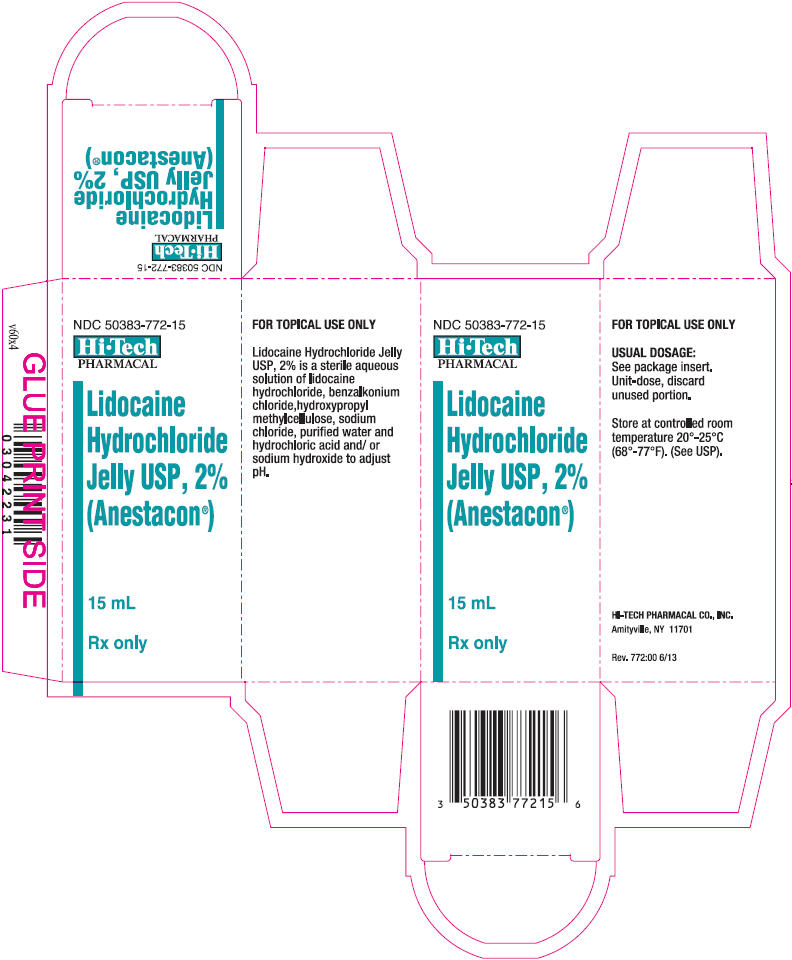Anestacon | Lidocaine Hydrochloride Jelly while Breastfeeding

What is Anestacon | Lidocaine Hydrochloride Jelly used for?
What are the risk associated with Anestacon | Lidocaine Hydrochloride Jelly usage while breastfeeding? What precautions shall I take while using it in breastfeeding?

Nursing Mothers Lidocaine is secreted in human milk. The clinical significance of this observation is unknown. Caution should be exercised when lidocaine is administered to a nursing woman.
Anestacon | Lidocaine Hydrochloride Jelly Breastfeeding Analsys
Lidocaine hydrochloride anhydrous while Breastfeeding
SafeCAS Number: 137-58-6
Compatible with breastfeeding no matter the multiple ways it can be used: anesthetic, anti-arrhythmic, or anti-epileptic drug. Excreted into breast milk in non-significant amount with no side effects on breastfed infants from treated mothers. As a topical anesthetic (dermatologic, dental-stomatologic, ophtalmotologic and otologic preparations) it has an almost nil systemic absorption. Avoid using it on the nipple, but if necessary do it after the breast feed, wipe it out and rinse with water before the next feed, An euptectic mixture with added Prilocaine (EMLA) is used for dermatologic anesthesia. There is an increased risk of Methemoglobinemia when applied on large surfaces or taken by mouth. Intrapartum anesthesia may delay the onset of phase II of Lactogenesis or milk coming-in. The American Academy of Pediatrics rates it usually compatible with Breastfeeding.
Anestacon | Lidocaine Hydrochloride Jelly Breastfeeding Analsys - 2
Lidocaine hydrochloride anhydrous while Breastfeeding
CAS Number: 137-58-6
Lidocaine concentrations in milk during continuous IV infusion, epidural administration and in high doses as a local anesthetic are low and the lidocaine is poorly absorbed by the infant. Lidocaine is not expected to cause any adverse effects in breastfed infants. No special precautions are required.[1][2][3] Lidocaine labor and delivery with other anesthetics and analgesics has been reported by some to interfere with breastfeeding. However, this assessment is controversial and complex because of the many different combinations of drugs, dosages and patient populations studied as well as the variety of techniques used and deficient design of many of the studies. Overall it appears that with good breastfeeding support epidural lidocaine with or without fentanyl or one of its derivatives has little or no adverse effect on breastfeeding success.[4][5][6][7][8] Labor pain medication may delay the onset of lactation.
What should I do if already breastfed my kid after using Anestacon | Lidocaine Hydrochloride Jelly?
It is always a good idea to keep your healthcare provider or doctor informed about your drug usage during pregnancy and breastfeeding but if you have not informed your doctor about Anestacon | Lidocaine Hydrochloride Jelly and have used it then do not panic as Anestacon | Lidocaine Hydrochloride Jelly is mostly safe in breastfeeding and should not cause any harm to your baby.
My health care provider has asked me to use Anestacon | Lidocaine Hydrochloride Jelly, what to do?
Definitely, Anestacon | Lidocaine Hydrochloride Jelly is safe in lactation for baby. No wonder your doctor has recommended it.
If I am using Anestacon | Lidocaine Hydrochloride Jelly, will my baby need extra monitoring?
No extra baby monitoring required while mother is using Anestacon | Lidocaine Hydrochloride Jelly
Who can I talk to if I have questions about usage of Anestacon | Lidocaine Hydrochloride Jelly in breastfeeding?
US
National Womens Health and Breastfeeding Helpline: 800-994-9662 (TDD 888-220-5446) 9 a.m. and 6 p.m. ET, Monday through Friday
UK
National Breastfeeding Helpline: 0300-100-0212 9.30am to 9.30pm, daily
Association of Breastfeeding Mothers: 0300-330-5453
La Leche League: 0345-120-2918
The Breastfeeding Network supporter line in Bengali and Sylheti: 0300-456-2421
National Childbirth Trust (NCT): 0300-330-0700
Australia
National Breastfeeding Helpline: 1800-686-268 24 hours a day, 7 days a week
Canada
Telehealth Ontario for breastfeeding: 1-866-797-0000 24 hours a day, 7 days a week
